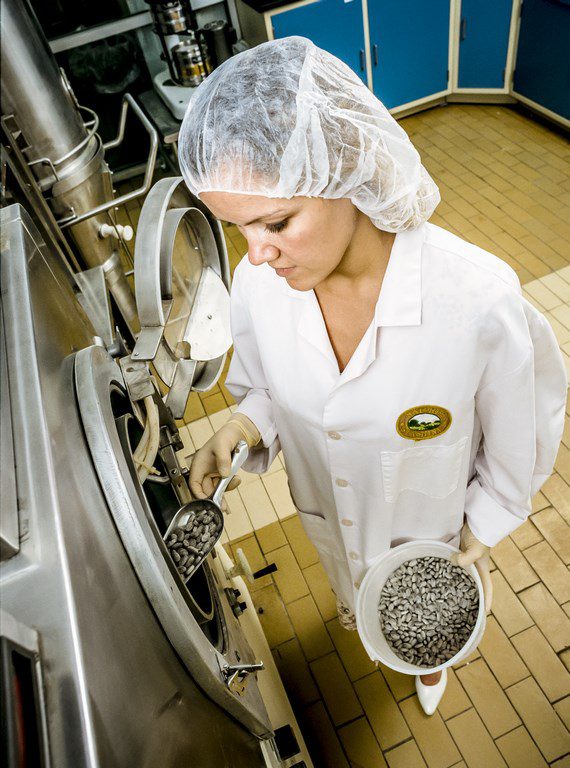How we can build on the performance foundations of the 2nd industrial revolution, adding traceability, sustainability and flexibility to the recipe.
It’s not easy being a manufacturer of consumer packaged goods. Profitably manufacturing food, beverages, cosmetics and pharmaceutical products that meet the necessary quality and compliance requirements at the right price point for a market with rapidly changing demands, has never been more challenging.
 Our goal is to support customers in areas like food and beverage by helping to improve plant performance and bring greater flexibility to operations through digital transformation. Especially since agility hasn’t always been part of the manufacturing story.
Our goal is to support customers in areas like food and beverage by helping to improve plant performance and bring greater flexibility to operations through digital transformation. Especially since agility hasn’t always been part of the manufacturing story.
Performance agility as the next innovation in manufacturing
During what is commonly referred to as the second industrial revolution, Henry Ford’s great manufacturing innovation was bringing cars to the masses. By finding ways of producing high volumes of cars at low prices, cars went from something that rich people owned, to something that everyone could buy.
This is often attributed to the moving assembly line, which meant less workers were required. It also cut the time it took to build a car from 12 hours to down to just two hours and 30 minutes. To simplify the production process and decrease the number of production lines needed, the majority of cars were made in one color. Black was chosen because it was the cheapest and most durable paint available.
Industry 4.0 enables Agile Production
Ford’s original manufacturing principles are still the foundation of what’s used today. The pressure to produce the right product at the right price is greater than ever. On top of this we have extra challenges to deal with. People want to know where their food has come from. Was it made sustainably? Was it ethically sourced? Does it comply with regulations? And if you can’t give them this, someone else will.
During the fourth industrial revolution plant performance is more than operational efficiency. It also includes agile, tracible production. The good news is the technology available now means we can improve efficiency while also making operations more agile.
How IIoT solutions boost Plant Performance
So how do manufacturers in the food and beverage world achieve the right levels operational performance and still give consumers what they want? With digital solutions we can optimize processes and overall plant performance, reducing waste, energy usage and labor costs, and increasing production efficiency. Fortunately, these same digital solutions are also a step towards more agile, sustainable operations. And the results for plants using these technologies are exciting.
In China, leading dairy producer Yili Group managed to increase operational efficiency by 19%, while reducing energy costs by 5%.
- Using augmented reality in food and beverage manufacturing
Augmented reality (AR) ensures workers that they have the right information when and where they need it, including maintenance data and, in case of a problem, visual guidance on where the fault is and how to rectify it. With maintenance personnel spending up to 50% of their time today searching for information, AR can really pay off in terms of reduced downtime and improved overall equipment effectiveness (OEE). AR can even help improve safety since in many cases staff don’t need to physically open panel doors to understand what is going on.
- Secure asset connection and remote troubleshooting
Nowadays it’s possible to do a lot of things without even having to be on the plant floor. Secure asset connection allows you to connect to assets to do maintenance, change manufacturing parameters or even perform trouble shooting, all from remote locations. Experts can ‘look over your shoulder’ to guide you or make suggestions when you’re troubleshooting or just trying to make things run better. Connections are end-to-end cybersecure and remote access can save you a lot in labor costs. In some cases, the approach has shortened troubleshooting time from over seven days to as little as four hours!
Given downward price pressures from large retailers and changing consumer demands, food processors must find ways to improve both the cost of manufacturing and the ranges they can deliver to market.
During the second industrial revolution in the early 20th century Henry Ford achieved manufacturing efficiency at the expense of flexibility. In the early 21st century during the fourth industrial revolution we can potentially achieve both.
Learn more about how digitization can improve the performance of plants here.




Conversation
Great Article Sophie.
Very well articulated as well as connected !!!
#LifeisOn